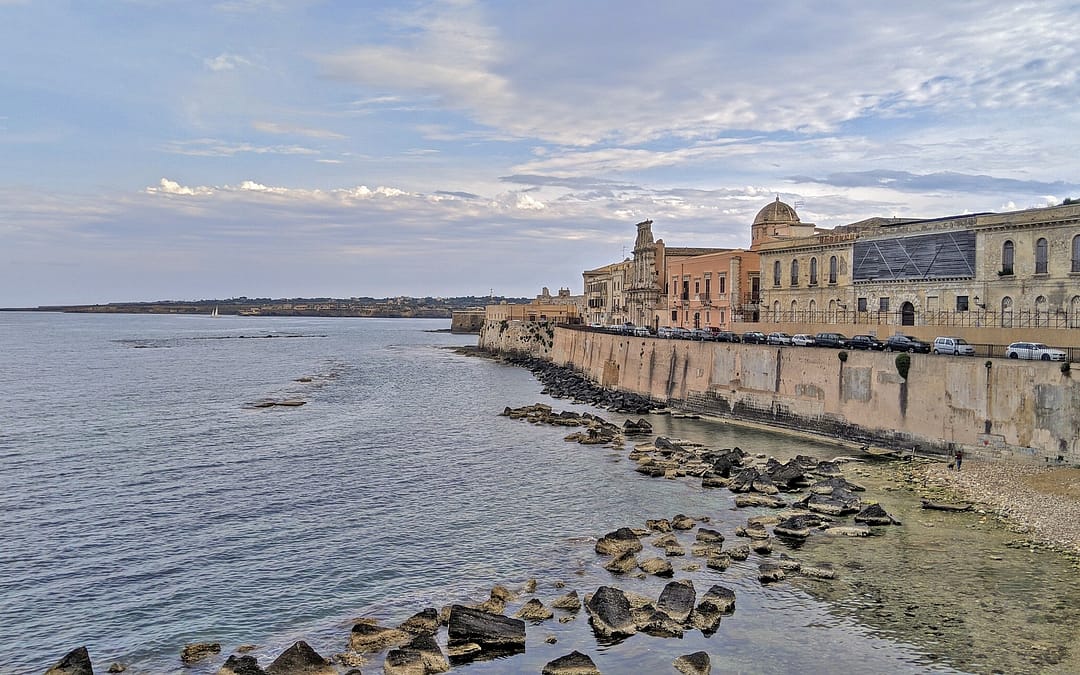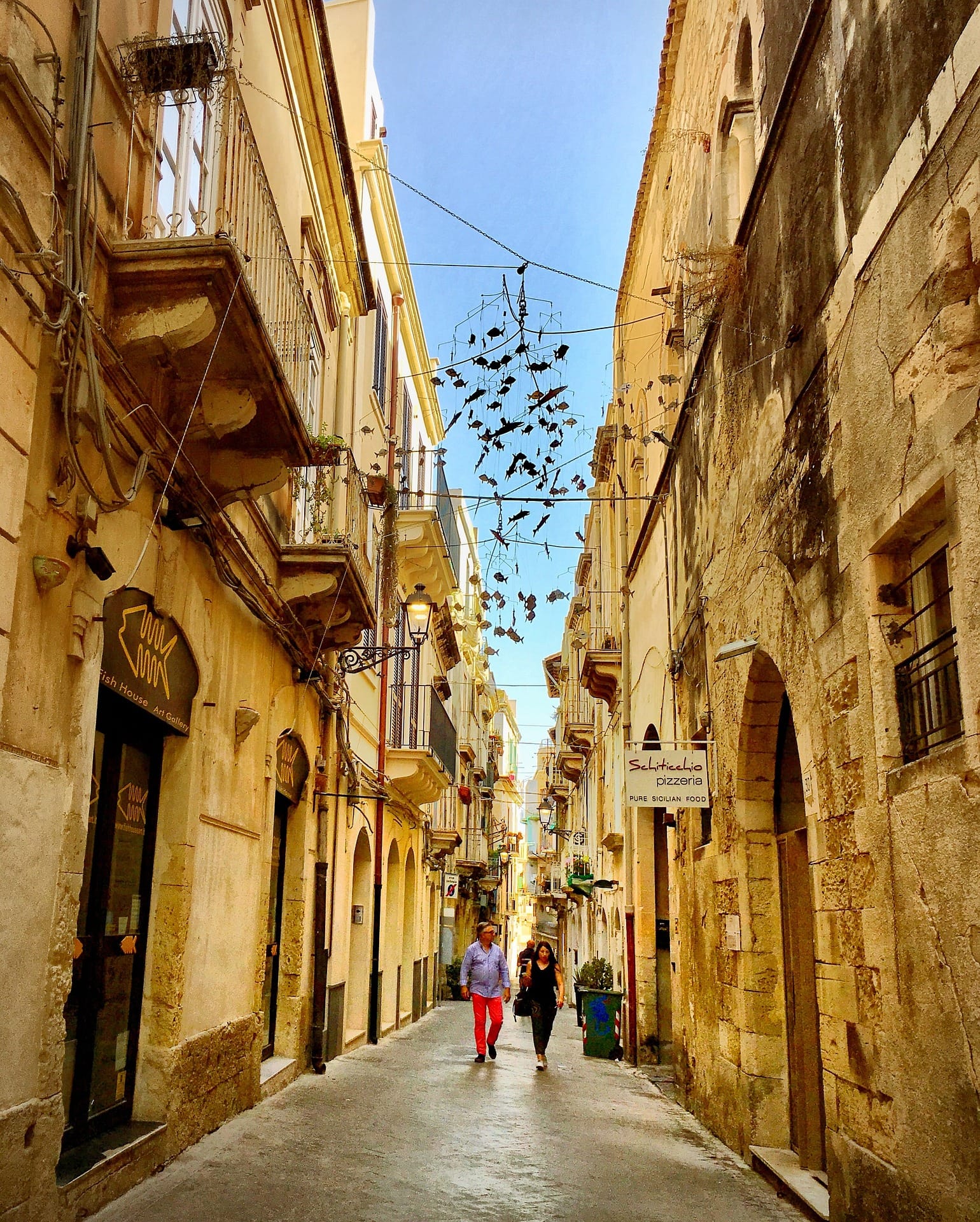Ortigia: The Heartbeat of Syracuse
At the nucleus of Syracuse lies Ortigia, the historical center connected to the mainland by the picturesque Ponte Umbertino and Ponte Santa Lucia. This enchanting island, considered one of the world’s most beautiful inhabited islands, unveils a maze of narrow streets teeming with monuments, museums, and the pulsating energy of restaurants and clubs. Ortigia serves as both the starting point and the serene refuge at the end of a day filled with discovery.
A Journey Through Myth and History
Ortigia is a visual symphony, boasting temples, churches, palaces, and fountains, each a testament to Syracuse’s storied past. As you cross the bridge, the Temple of Apollo, Sicily’s oldest, whispers tales of its transformation from a mosque to a Christian church over the centuries. The nearby Fountain of Diana (Artemis) intertwines with the myth of Arethusa, a Greek nymph transformed into the spring of Ortigia. This captivating tale, linked to the Arethusa Fountain, stands as a symbol of Ortigia, celebrated through the centuries by poets and writers.
The Duomo: Where History Meets Baroque Grandeur
Ascending to the highest point of Ortigia, the Metropolitan Cathedral of the Nativity of the Holy Mary of Syracuse, once a Greek temple to Minerva, showcases a spectacular blend of Baroque and Rococo elements. Beneath it lies the Hypogeum of Piazza Duomo, a WWII air-raid shelter carved from an ancient stone quarry, offering a poignant glimpse into the city’s wartime history.
Archaeological Marvels and Acoustic Wonders
Syracuse boasts some of Europe’s most significant archaeological sites, defended by UNESCO as World Heritage Sites. The Greek Theatre, Amphitheatre, Ear of Dionysius, Temple of Hieron, and the Tomb of Archimedes narrate tales of ancient performances and ingenious architectural feats. The Amphitheatre, once 140 meters long, bears witness to Spanish interventions during which stones were repurposed for the defense ramparts of Ortigia.
Syracuse, a city of antiquity that once rivaled Athens, unfolds like a captivating tale, inviting you to explore its rich history, mythical narratives, and an exquisite culinary scene.
Culinary Delights and Local Wines
With the Mediterranean at its doorstep and the Hyblean Mountains as a backdrop, Syracuse entices with a culinary repertoire of sea and land delicacies. Indulge in fried pasta with anchovies, ravioli stuffed with fish, and cavatelli with tuna roe. Experience the unique flavors of lolli, a pasta seasoned with pork sauce or broad beans, and relish second courses like tuna fish soup, pan-fried rabbit, and meatballs. Accompanied by caponata and various vegetables, each dish is a celebration of Syracuse’s extraordinary quality produce.
Raise a toast to Syracuse with its renowned wines, including the 24 DOP varieties like Syracuse and Erolo, completing this sensory journey through a city where history, myth, and culinary artistry harmoniously converge. Pack your bags and let Syracuse unravel its treasures for an unforgettable experience





